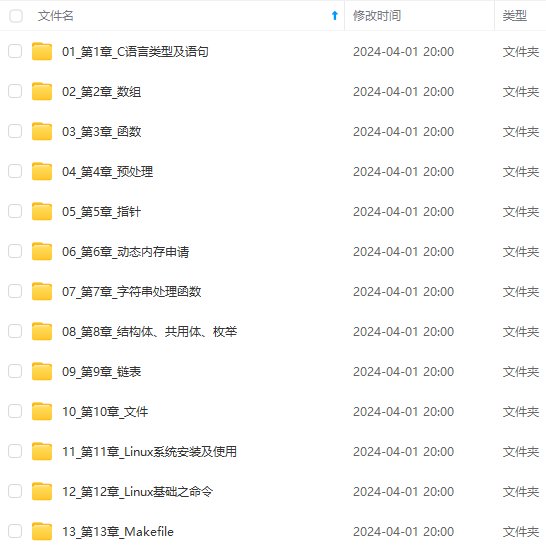

既有适合小白学习的零基础资料,也有适合3年以上经验的小伙伴深入学习提升的进阶课程,涵盖了95%以上C C++开发知识点,真正体系化!
由于文件比较多,这里只是将部分目录截图出来,全套包含大厂面经、学习笔记、源码讲义、实战项目、大纲路线、讲解视频,并且后续会持续更新
print(Polygon(np.array([[343, 350], [448, 135],
[474, 143], [369, 359]])).area)
**适用范围**
适应范围:LNMS一般用于轴对齐的矩形框(即水平bbox),特别是离得很近的倾斜文本
当图像中有很多文本时候,就会产生大量的检测框(即下图中中间图中绿色的框,这里总共会产生1400多个绿色框,这里我图片压缩过了,比较模糊);经过LNMS后,得到最终的结果(即下述中的右图,即蓝色框)
#### 倾斜NMS(INMS)
INMS是在2018的文章中提出的,主要是解决倾斜的文本行检测.
**基本步骤**
(rbox代表旋转矩形框)
1.对输出的检测框rbox按照得分进行降序排序rbox\_lists;
2.依次遍历上述的rbox\_lists.具体的做法是:将当前遍历的rbox与剩余的rbox进行交集运算得到相应的相交点集合,并根据判断相交点集合组成的凸边形的面积,计算每两个rbox的IOU;对于大于设定阈值的rbox进行滤除,保留小于设定阈值的rbox;
3.得到最终的检测框
**实现代码**
#coding=utf-8
from future import absolute_import
from future import division
from future import print_function
import numpy as np
import cv2
import tensorflow as tf
def nms_rotate(decode_boxes, scores, iou_threshold, max_output_size,
use_angle_condition=False, angle_threshold=0, use_gpu=False, gpu_id=0):
“”"
:param boxes: format [x_c, y_c, w, h, theta]
:param scores: scores of boxes
:param threshold: iou threshold (0.7 or 0.5)
:param max_output_size: max number of output
:return: the remaining index of boxes
“”"
if use_gpu:
#采用gpu方式
keep = nms_rotate_gpu(boxes_list=decode_boxes,
scores=scores,
iou_threshold=iou_threshold,
angle_gap_threshold=angle_threshold,
use_angle_condition=use_angle_condition,
device_id=gpu_id)
keep = tf.cond(
tf.greater(tf.shape(keep)[0], max_output_size),
true_fn=lambda: tf.slice(keep, [0], [max_output_size]),
false_fn=lambda: keep)
else: #采用cpu方式
keep = tf.py_func(nms_rotate_cpu,
inp=[decode_boxes, scores, iou_threshold, max_output_size],
Tout=tf.int64)
return keep
def nms_rotate_cpu(boxes, scores, iou_threshold, max_output_size):
keep = [] #保留框的结果集合
order = scores.argsort()[::-1] #对检测结果得分进行降序排序
num = boxes.shape[0] #获取检测框的个数
suppressed = np.zeros((num), dtype=np.int)
for _i in range(num):
if len(keep) >= max_output_size: #若当前保留框集合中的个数大于max_output_size时,直接返回
break
i = order[_i]
if suppressed[i] == 1: #对于抑制的检测框直接跳过
continue
keep.append(i) #保留当前框的索引
r1 = ((boxes[i, 1], boxes[i, 0]), (boxes[i, 3], boxes[i, 2]), boxes[i, 4]) #根据box信息组合成opencv中的旋转bbox
print("r1:{}".format(r1))
area_r1 = boxes[i, 2] \* boxes[i, 3] #计算当前检测框的面积
for _j in range(_i + 1, num): #对剩余的而进行遍历
j = order[_j]
if suppressed[i] == 1:
continue
r2 = ((boxes[j, 1], boxes[j, 0]), (boxes[j, 3], boxes[j, 2]), boxes[j, 4])
area_r2 = boxes[j, 2] \* boxes[j, 3]
inter = 0.0
int_pts = cv2.rotatedRectangleIntersection(r1, r2)[1] #求两个旋转矩形的交集,并返回相交的点集合
if int_pts is not None:
order_pts = cv2.convexHull(int_pts, returnPoints=True) #求点集的凸边形
int_area = cv2.contourArea(order_pts) #计算当前点集合组成的凸边形的面积
inter = int_area \* 1.0 / (area_r1 + area_r2 - int_area + 0.0000001)
if inter >= iou_threshold: #对大于设定阈值的检测框进行滤除
suppressed[j] = 1
return np.array(keep, np.int64)
gpu的实现方式
def nms_rotate_gpu(boxes_list, scores, iou_threshold, use_angle_condition=False, angle_gap_threshold=0, device_id=0):
if use_angle_condition:
y_c, x_c, h, w, theta = tf.unstack(boxes_list, axis=1)
boxes_list = tf.transpose(tf.stack([x_c, y_c, w, h, theta]))
det_tensor = tf.concat([boxes_list, tf.expand_dims(scores, axis=1)], axis=1)
keep = tf.py_func(rotate_gpu_nms,
inp=[det_tensor, iou_threshold, device_id],
Tout=tf.int64)
return keep
else:
y_c, x_c, h, w, theta = tf.unstack(boxes_list, axis=1)
boxes_list = tf.transpose(tf.stack([x_c, y_c, w, h, theta]))
det_tensor = tf.concat([boxes_list, tf.expand_dims(scores, axis=1)], axis=1)
keep = tf.py_func(rotate_gpu_nms,
inp=[det_tensor, iou_threshold, device_id],
Tout=tf.int64)
keep = tf.reshape(keep, [-1])
return keep
if name == ‘__main__’:
boxes = np.array([[50, 40, 100, 100, 0],
[60, 50, 100, 100, 0],
[50, 30, 100, 100, -45.],
[200, 190, 100, 100, 0.]])
scores = np.array([0.99, 0.88, 0.66, 0.77])
keep = nms_rotate(tf.convert_to_tensor(boxes, dtype=tf.float32), tf.convert_to_tensor(scores, dtype=tf.float32),
0.7, 5)
import os
os.environ["CUDA\_VISIBLE\_DEVICES"] = '0'
with tf.Session() as sess:
print(sess.run(keep))
**适用范围**
适用范围:一般适用于倾斜文本检测(即带方向的文本)
#### 多边形NMS(PNMS)
Polygon NMS是在2017年Detecting Curve Text in the Wild: New Dataset and New Solution文章提出的,主要是针对曲线文本提出的.
**基本步骤**
其思路和标准NMS一致,将标准NMS中的矩形替换成多边形即可,这里就就不展开详细说明了
**实现代码**
#coding=utf-8
import numpy as np
from shapely.geometry import *
def py_cpu_pnms(dets, thresh):
# 获取检测坐标点及对应的得分
bbox = dets[:, :4]
scores = dets[:, 4]
#这里文本的标注采用14个点,这里获取的是这14个点的偏移
info_bbox = dets[:, 5:33]
#保存最终点坐标
pts = []
for i in xrange(dets.shape[0]):
pts.append([[int(bbox[i, 0]) + info_bbox[i, j], int(bbox[i, 1]) + info_bbox[i, j+1]] for j in xrange(0,28,2)])
areas = np.zeros(scores.shape)
#得分降序
order = scores.argsort()[::-1]
inter_areas = np.zeros((scores.shape[0], scores.shape[0]))
for il in xrange(len(pts)):
#当前点集组成多边形,并计算该多边形的面积
poly = Polygon(pts[il])
areas[il] = poly.area
#多剩余的进行遍历
for jl in xrange(il, len(pts)):
polyj = Polygon(pts[jl])
#计算两个多边形的交集,并计算对应的面积
inS = poly.intersection(polyj)
inter_areas[il][jl] = inS.area
inter_areas[jl][il] = inS.area
#下面做法和nms一样
keep = []
while order.size > 0:
i = order[0]
keep.append(i)
ovr = inter_areas[i][order[1:]] / (areas[i] + areas[order[1:]] - inter_areas[i][order[1:]])
inds = np.where(ovr <= thresh)[0]
order = order[inds + 1]
return keep
**适用范围**
适用范围:一般适用于不规则形状文本的检测(如曲线文本)
#### 掩膜NMS(MNMS)
MNMS是在FTSN文本检测文章中提出的,基于分割掩膜图的基础上进行IOU计算.如果文本检测采用的是基于分割的方法来的话,个人建议采用该方法:1).它可以很好地区分相近实例文本;2)它可以处理任意形状的文本实例
**具体步骤**
1.先将所有的检测按照得分进行降序排序box\_lists;
2.对box\_lists进行遍历,每次遍历当前box与剩余box的IOU(它是在掩膜的基础上进行计算的,具体计算公式为
M
M
I
=
max
(
I
I
A
,
I
I
B
)
M M I=\max \left(\frac{I}{I\_{A}}, \frac{I}{I\_{B}}\right)
MMI=max(IAI,IBI)
),对于大于设定阈值的box进行滤除;
3.得到最终的检测框
**实现代码**
#coding=utf-8
#############################################
mask nms 实现
#############################################
import cv2
import numpy as np
import imutils
import copy
EPS=0.00001
def get_mask(box,mask):
“”“根据box获取对应的掩膜”“”
tmp_mask=np.zeros(mask.shape,dtype=“uint8”)
tmp=np.array(box.tolist(),dtype=np.int32).reshape(-1,2)
cv2.fillPoly(tmp_mask, [tmp], (255))
tmp_mask=cv2.bitwise_and(tmp_mask,mask)
return tmp_mask,cv2.countNonZero(tmp_mask)
def comput_mmi(area_a,area_b,intersect):
“”"
计算MMI,2018.11.23 add
:param mask_a: 实例文本a的mask的面积
:param mask_b: 实例文本b的mask的面积
:param intersect: 实例文本a和实例文本b的相交面积
:return:
“”"
if area_a0 or area_b0:
area_a+=EPS
area_b+=EPS
print(“the area of text is 0”)
return max(float(intersect)/area_a,float(intersect)/area_b)
def mask_nms(dets, mask, thres=0.3):
“”"
mask nms 实现函数
:param dets: 检测结果,是一个N*9的numpy,
:param mask: 当前检测的mask
:param thres: 检测的阈值
“”"
# 获取bbox及对应的score
bbox_infos=dets[:,:8]
scores=dets[:,8]
keep=[]
order=scores.argsort()[::-1]
print("order:{}".format(order))
nums=len(bbox_infos)
suppressed=np.zeros((nums), dtype=np.int)
print("lens:{}".format(nums))
# 循环遍历
for i in range(nums):
idx=order[i]
if suppressed[idx]==1:
continue
keep.append(idx)
mask_a,area_a=get_mask(bbox_infos[idx],mask)
for j in range(i,nums):
idx_j=order[j]
if suppressed[idx_j]==1:
continue
mask_b, area_b =get_mask(bbox_infos[idx_j],mask)
# 获取两个文本的相交面积
merge_mask=cv2.bitwise_and(mask_a,mask_b)
area_intersect=cv2.countNonZero(merge_mask)
#计算MMI
mmi=comput_mmi(area_a,area_b,area_intersect)
# print("area\_a:{},area\_b:{},inte:{},mmi:{}".format(area\_a,area\_b,area\_intersect,mmi))
if mmi >= thres:
suppressed[idx_j] = 1
return dets[keep]
**适用范围**
适用范围:采用分割路线的文本检测,都可以适用该方法
### 总结
在文本检测中,考虑到文本方向的多样化.
* 针对水平文本检测:标准的NMS就可以
* 针对基于分割方法的多方向文本检测,优先推荐Mask NMS,当然也可以采用Polygon NMS和Inclined NMS
* 针对基于检测方法的多方向文本检测,优先推荐Polygon NMS和Inclined NMS
### Soft-NMS
#### Motivation
绝大部分目标检测方法,最后都要用到 NMS-非极大值抑制进行后处理。 通常的做法是将检测框按得分排序,然后保留得分最高的框,同时删除与该框重叠面积大于一定比例的其它框。
这种贪心式方法存在如下图所示的问题: 红色框和绿色框是当前的检测结果,二者的得分分别是0.95和0.80。如果按照传统的NMS进行处理,首先选中得分最高的红色框,然后绿色框就会因为与之重叠面积过大而被删掉。
另一方面,NMS的阈值也不太容易确定,设小了会出现下图的情况(绿色框因为和红色框重叠面积较大而被删掉),设置过高又容易增大误检。
*思路:不要粗鲁地删除所有IOU大于阈值的框,而是降低其置信度。*
#### Method
如下图:如文章题目而言,就是用一行代码来替换掉原来的NMS。按照下图整个处理一遍之后,指定一个置信度阈值,然后最后得分大于该阈值的检测框得以保留.

原来的NMS可以描述如下:将IOU大于阈值的窗口的得分全部置为0。
s
i
=
{
s
i
,
iou
(
M
,
b
i
)
<
N
t
0
,
iou
(
M
,
b
i
)
≥
N
t
s\_{i}=\left\{\begin{array}{ll}{s\_{i},} & {\operatorname{iou}\left(\mathcal{M}, b\_{i}\right)<N\_{t}} \\ {0,} & {\operatorname{iou}\left(\mathcal{M}, b\_{i}\right) \geq N\_{t}}\end{array}\right.
si={si,0,iou(M,bi)<Ntiou(M,bi)≥Nt
文章的改进有两种形式,一种是线性加权的:
s
i
=
{
s
i
,
iou
(
M
,
b
i
)
<
N
t
s
i
(
1
−
iou
(
M
,
b
i
)
)
,
iou
(
M
,
b
i
)
≥
N


**既有适合小白学习的零基础资料,也有适合3年以上经验的小伙伴深入学习提升的进阶课程,涵盖了95%以上C C++开发知识点,真正体系化!**
**由于文件比较多,这里只是将部分目录截图出来,全套包含大厂面经、学习笔记、源码讲义、实战项目、大纲路线、讲解视频,并且后续会持续更新**
**[如果你需要这些资料,可以戳这里获取](https://bbs.csdn.net/topics/618668825)**
(
M
,
b
i
)
<
N
t
s
i
(
1
−
iou
(
M
,
b
i
)
)
,
iou
(
M
,
b
i
)
≥
N
[外链图片转存中...(img-cQKGh6et-1715678350954)]
[外链图片转存中...(img-q9ZwuXPX-1715678350954)]
**既有适合小白学习的零基础资料,也有适合3年以上经验的小伙伴深入学习提升的进阶课程,涵盖了95%以上C C++开发知识点,真正体系化!**
**由于文件比较多,这里只是将部分目录截图出来,全套包含大厂面经、学习笔记、源码讲义、实战项目、大纲路线、讲解视频,并且后续会持续更新**
**[如果你需要这些资料,可以戳这里获取](https://bbs.csdn.net/topics/618668825)**






















 353
353

 被折叠的 条评论
为什么被折叠?
被折叠的 条评论
为什么被折叠?








